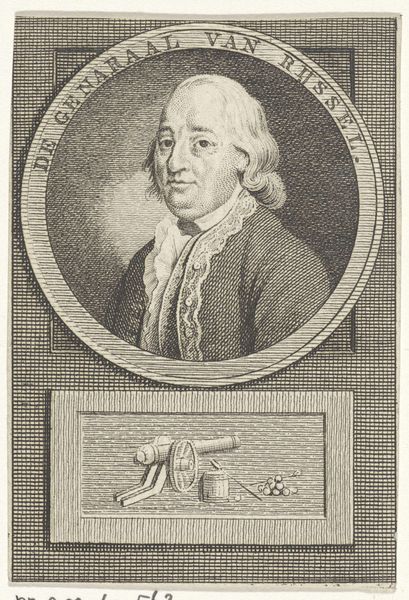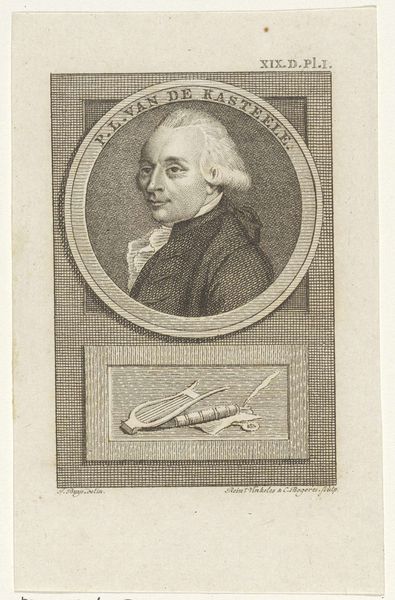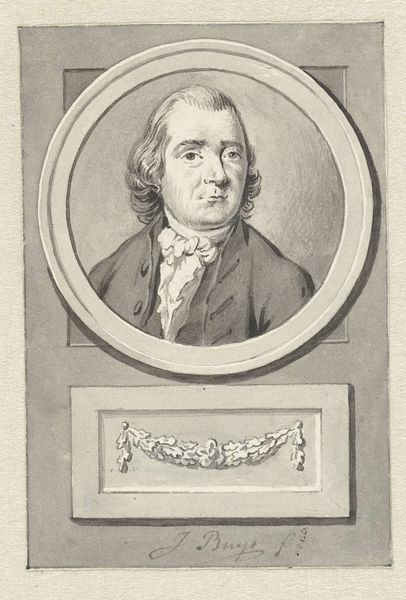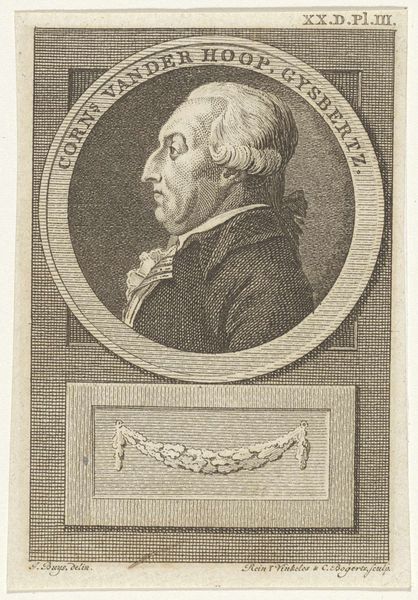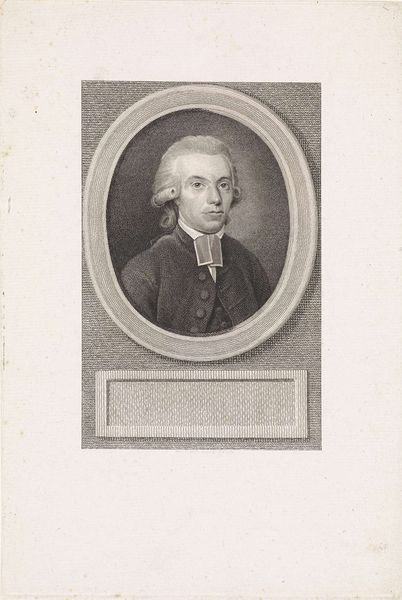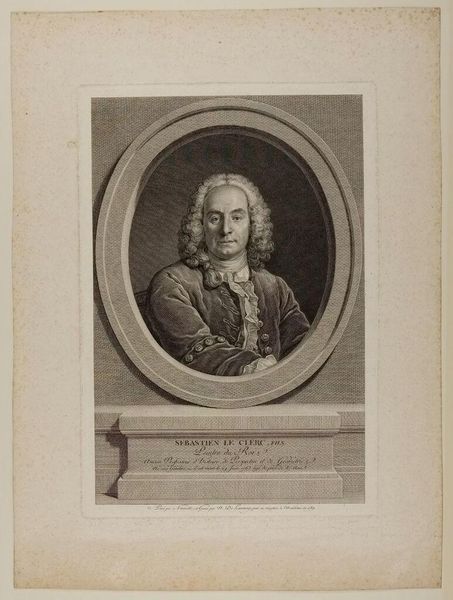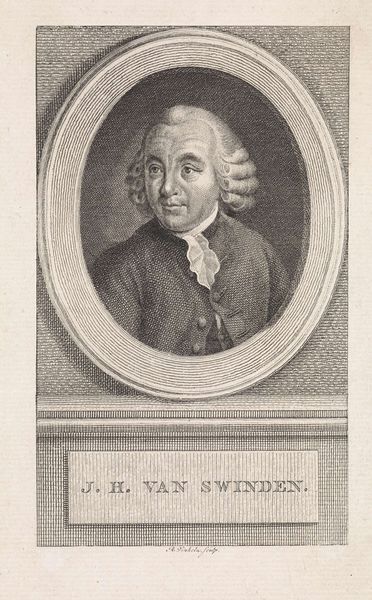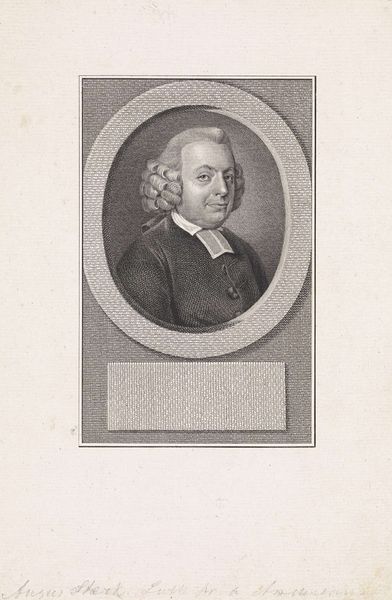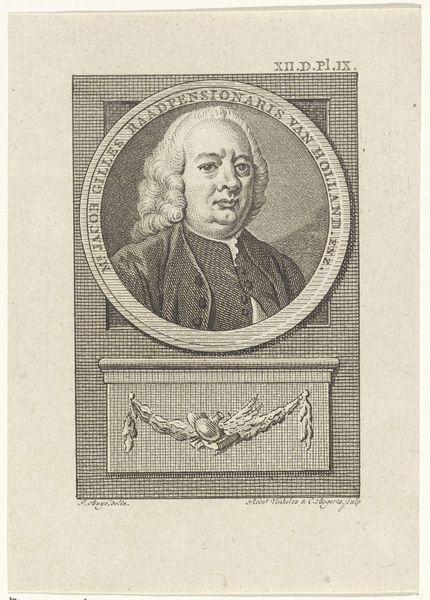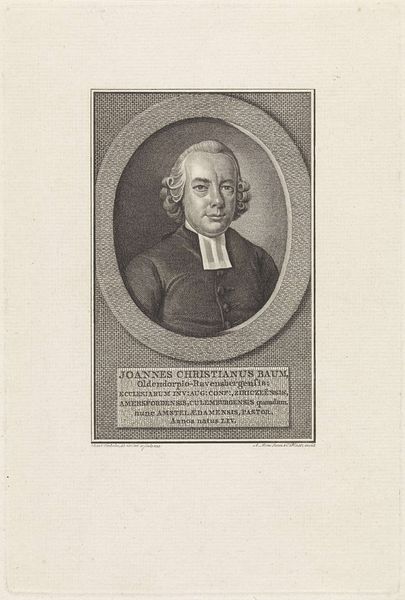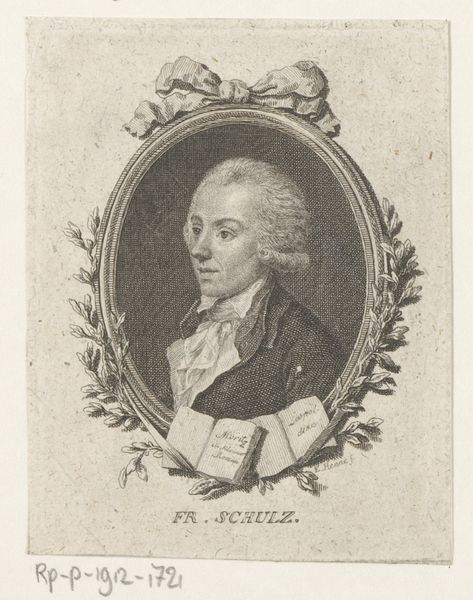
print, engraving
#
portrait
#
neoclacissism
# print
#
caricature
#
history-painting
#
engraving
#
realism
Dimensions: height 88 mm, width 60 mm
Copyright: Rijks Museum: Open Domain
Editor: So, here we have "Portrait of Cornelis van den Burg," made between 1783 and 1795 by Reinier Vinkeles. It's a print, an engraving actually, and the figure looks almost imposed on the grid backdrop. What do you see in the work that helps situate it? Curator: What I notice first are the layers of production. Consider the artist, Vinkeles. What was his labor? His social status relative to van den Burg? The print medium itself is telling. Prints facilitated the circulation of images, ideas. This allowed for the bourgeoisie and the elite to partake in a common visual culture. Where would something like this have been displayed, do you think? Editor: Perhaps in the sitter's home? To announce civic virtue through art? Or were these things, because they could be mass produced, meant for more public display, a circulating record of public figures? Curator: Precisely. Think about the paper itself. Where did it come from? Who produced it? The engraver's skill transformed raw materials into this finished image. The labor is materialized in those fine lines, replicating status even, given that portraiture would more traditionally be painting, and a domain for those of great economic means. How do you see the use of Neoclassical motifs playing into the political sphere at the time? Editor: The symmetry, the implied authority – I guess I hadn't thought about the political statement involved in choosing this mode of reproduction. It is, essentially, the commercialization of status through accessible techniques. Curator: Right. By looking at the process, materials, and context, we reveal a lot about Dutch society and the evolving status of art in the late 18th century. It's a testament to the democratization of images through printmaking. Editor: Thanks! Now I have to remember to consider the actual *making* of the art, not just the image presented. It adds a lot of context and layers to its cultural role.
Comments
No comments
Be the first to comment and join the conversation on the ultimate creative platform.
